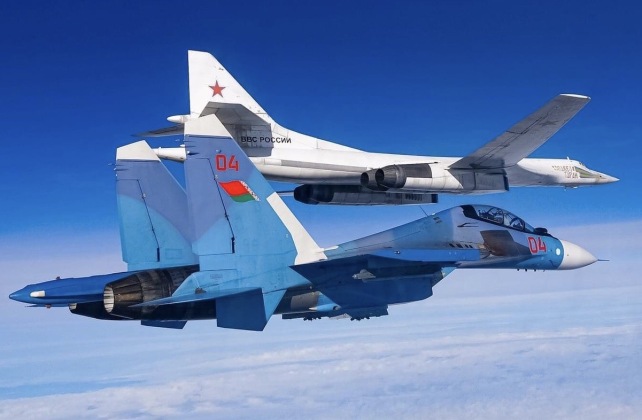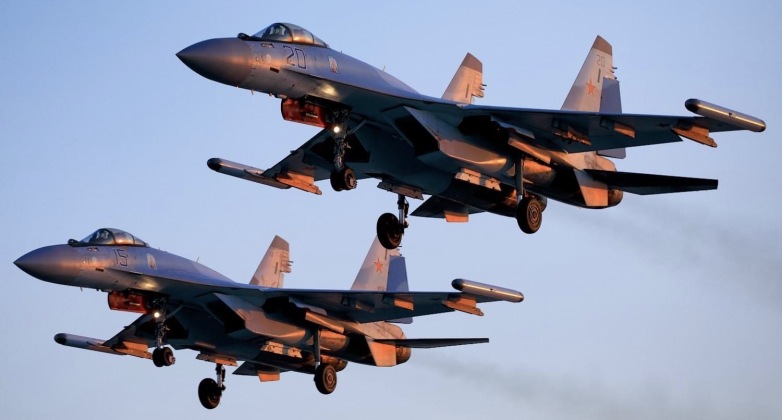Amid high tensions between Moscow and NATO over Ukraine, and growing defence ties between Russia and its strategically located neighbour Belarus, the Russian Air Force has deployed its most capable fighter the Su-35S to Belarusian airfields for forward deployment against NATO. Increasingly referring to themselves as ‘The Union State of Russia and Belarus,’ the two countries have strengthened defence ties considerably since 2020 after Minsk’s relations with the West deteriorated sharply that year, when Western powers began to support anti-government rioters and protesters and place sanctions on the Belarusian state. The two have increasingly integrated their air defences and commands, leading to the possibility that Su-35s in Belarus will fly under Belarusian command much like Russian Su-30SM fighters in the country were reported to do. Russia maintains military facilities in Belarus and at times of high tension between Minsk and Western powers in November 2021 it flew Tu-22M and Tu-160 strategic bombers over Belarusian airspace with local escorts in shows of force against NATO.

The first Su-35s arrived in Belarus on January 26th and deployed to the Baranovichi Airfield of the 61st fighter aviation base, a facility to the west of the country which formerly hosted some of the Soviet Union’s most valuable forward deployed aviation assets such as MiG-25 interceptors and Tu-22 bombers. Su-35s based there will be able to operate against targets across Europe including as far as Britain. The facility previously hosted Belarusian Air Force Su-27 fighters, a predecessor to the Su-35 inherited from the Soviet Air Force, before these were retired due to their high operational costs. Although seen as a show of force aimed at NATO, the Russian Defense Ministry reported that the deployment Su-35S was intended to inspect of the Union State’s response forces. The Su-35 crews were reportedly redeployed from the Russian Far East, allowing it to concentrate more of its elite units against NATO forces on its western borders.

The Su-35 is the most capable fighter in Russian service in terms of air to air performance, and with little over 100 in service they are relatively scarce assets the deployment of which has consistently been used to send strong signals at times of high tensions. Entering service from 2014, the ‘4++ generation’ fighters are relied on heavily primarily due to delays in bringing the next generation Su-57 into service. Their capabilities are nevertheless considered a match for top end NATO jets, with the fighters designed specifically with engagements against Western stealth fighters in mind and deploying sensors, including the Irbis-E radar, two L-band AESA radars and an infra red search and track system, to maximise situational awareness against them. The fighter saw its first overseas deployment in early 2016 to Syria, amid high tensions with NATO forces in the theatre, to escort Russian aircraft in the theatre. The Su-35’s most prized features include a very high endurance, powerful sensors, an extreme level of manoeuvrability from the world’s first serially produced three dimensional thrust vectoring engines, and a very long 400km engagement range provided by the R-37M air to air missile. This ensures double or more the range of NATO’s top air to air missiles the Meteor and AIM-120D.
